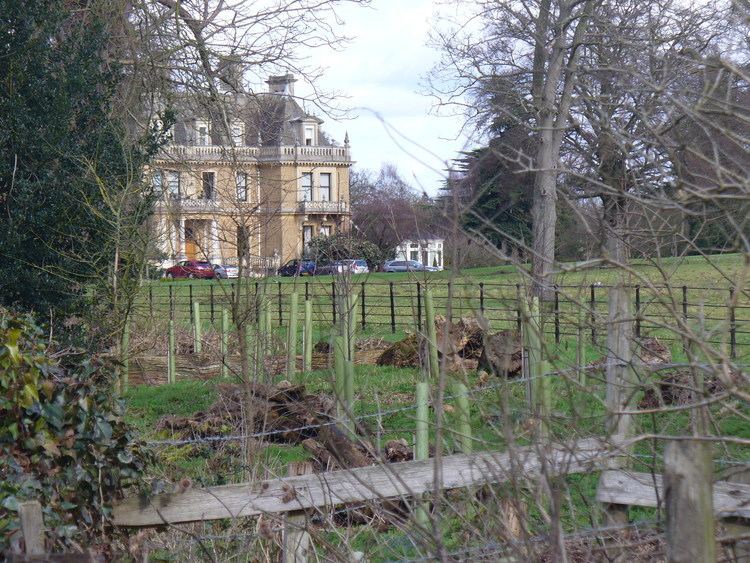 | ||
Similar St George's Church - Esher, Church of St Nicholas, Queen Elizabeth II Reservoir, Sunbury Lock, Island Barn Reservoir | ||
Cobham park baptist church presents come to the manger 2016 christmas program
Cobham Park is a country mansion and estate situated to the south of Cobham and encompassing the majority of Downside, Surrey, England it was formerly the seat of John Ligonier, 1st Earl Ligonier. It was later the home of Harvey Christian Combe, who was Lord Mayor of London and a partner in the Combe Delafield and Co. brewery. The estate, with the exception of the main house, still belongs to the Combe family.
Contents
- Cobham park baptist church presents come to the manger 2016 christmas program
- Rochester and cobham park golf club tour wmv
- History
- References
Rochester and cobham park golf club tour wmv
History
Earliest records of a house on the site of Cobham Park date back to the 12th century when it was known as "Downe Place", and there are records of royal patronage from the late 13th century. The name was derived from a family named Downe that had resided there for several generations; and from whom this part of the parish acquired the appellation of Downside, which it still retains. The house was later also known as "Downe Hall".
The house was rebuilt in the classical style in the 1720s by John Bridges. The design was based an Italian villa of the 1680-90 period. A description appeared in Daniel Defoe's "A Tour Through The Whole Island of Great Britain" which indicates that the house was quite splendid: "... for the size of this House, there is hardly any other near London, which has more useful and elegant Apartments". The grounds were also landscaped and the River Mole diverted.
The house was described as "a handsome and substantial building, nearly of a square form, and has a neat portico, which was erected some years ago in place of a veranda. It includes a good saloon with a coved and ornamented ceiling, (now a billiard room), a library, and other convenient apartments, embellished with a few marble busts, and some good pictures."
In around 1750, John Ligonier, 1st Earl Ligonier occupied and bought Cobham Park and entertained William Pitt the Elder at a party shortly thereafter. Ligonier appears to have used Cobham Park as a place of retreat and leisure (apparently he had a harem of four young girls).
Following Ligonier's death in 1770, Cobham Park passed to his nephew Edward.
In 1806, Cobham Park was purchased by Harvey Christian Combe, a brewer, for £30,000. Harvey died in 1818 and left the house to his son, Harvey who died in 1857; the house then passed to a nephew, Charles Combe. The house was destroyed by fire in the early 1870s.
A new house was built on the same foundations and completed in 1873 to a design by Edward Middleton Barry, third son of Sir Charles Barry the architect of the Palace of Westminster. Pevsner doesn't appear to have liked the new house, describing it as "very ugly French Renaissance". The Combe family gave up the mansion of Cobham Park as a family residence in the 1930s, Charles Combe having moved to nearby Painshill Park in 1904. Later the Combe family moved into other substantial houses on the estate, notably Cobham Court, Cossins house and Cobham Lodge.
The mansion house was then leased from the Combe family by the Eagle Star insurance group (now a member of the Zurich Financial Services group) as part of their administrative centre. Eagle Star left Cobham Park in 1958. In the 1960s and 1970s, various companies leased parts of the mansion house as office space from the Combe family. By now, the building began to suffer from lack of maintenance.
In 1979 Logica took a lease on the house and outbuildings. Subsequently, Logica bought the freehold from the Combe family and restored the buildings.
Logica sold the mansion house for £5.5 million in 2001 to Frogmore Estates, a property developer and speculator. They subsequently sold or leased it to Beechcroft (then a subsidiary of John Laing plc) who converted the house and outbuildings, and built some new apartments on the site, to make a total of around 22 luxury retirement apartments.
